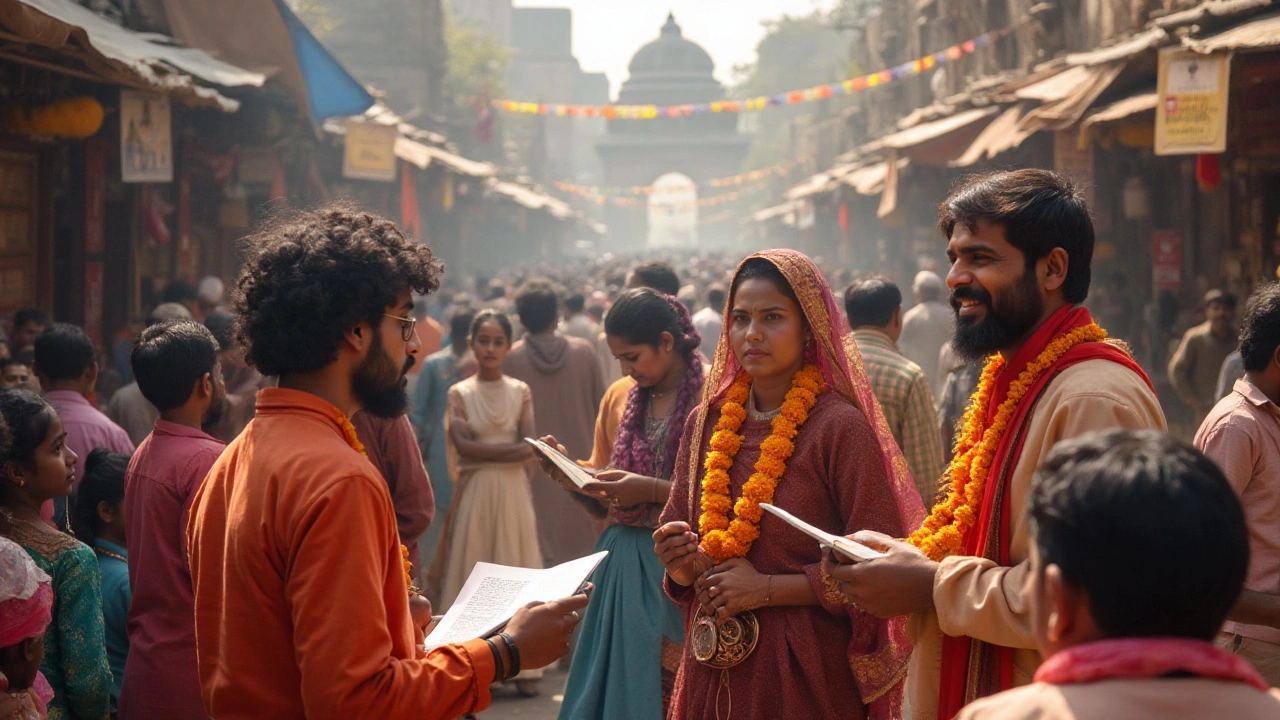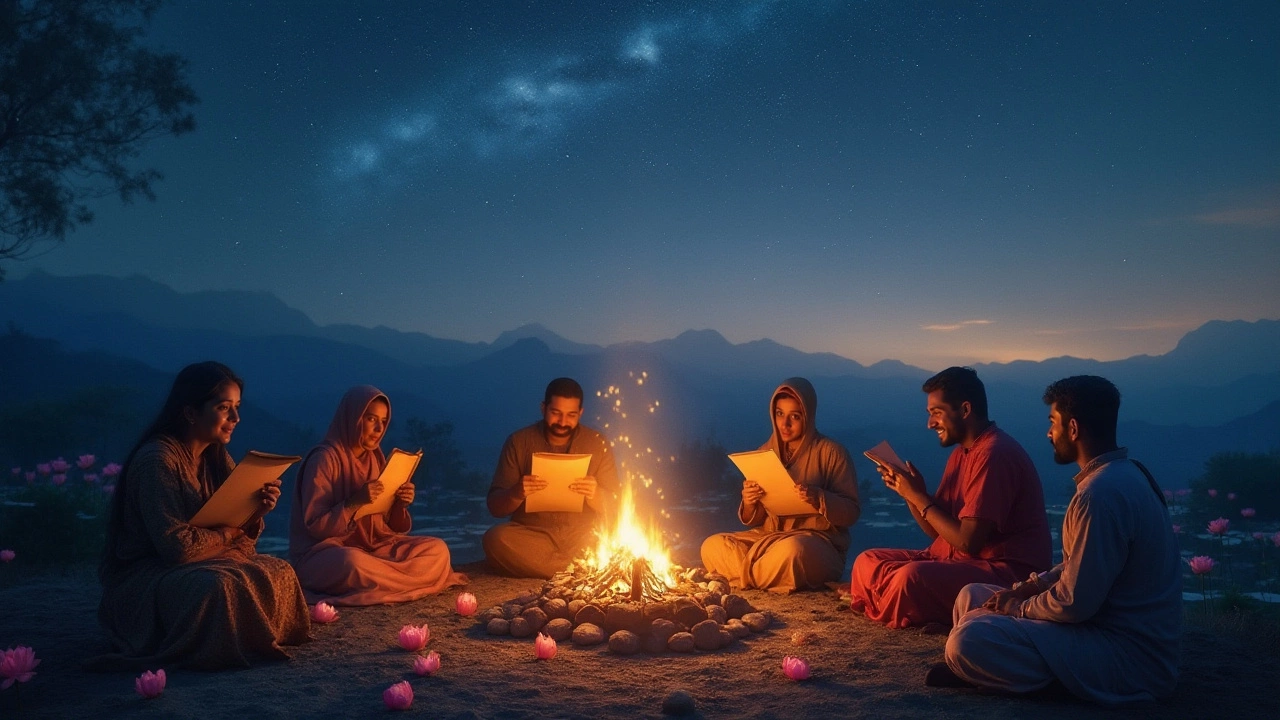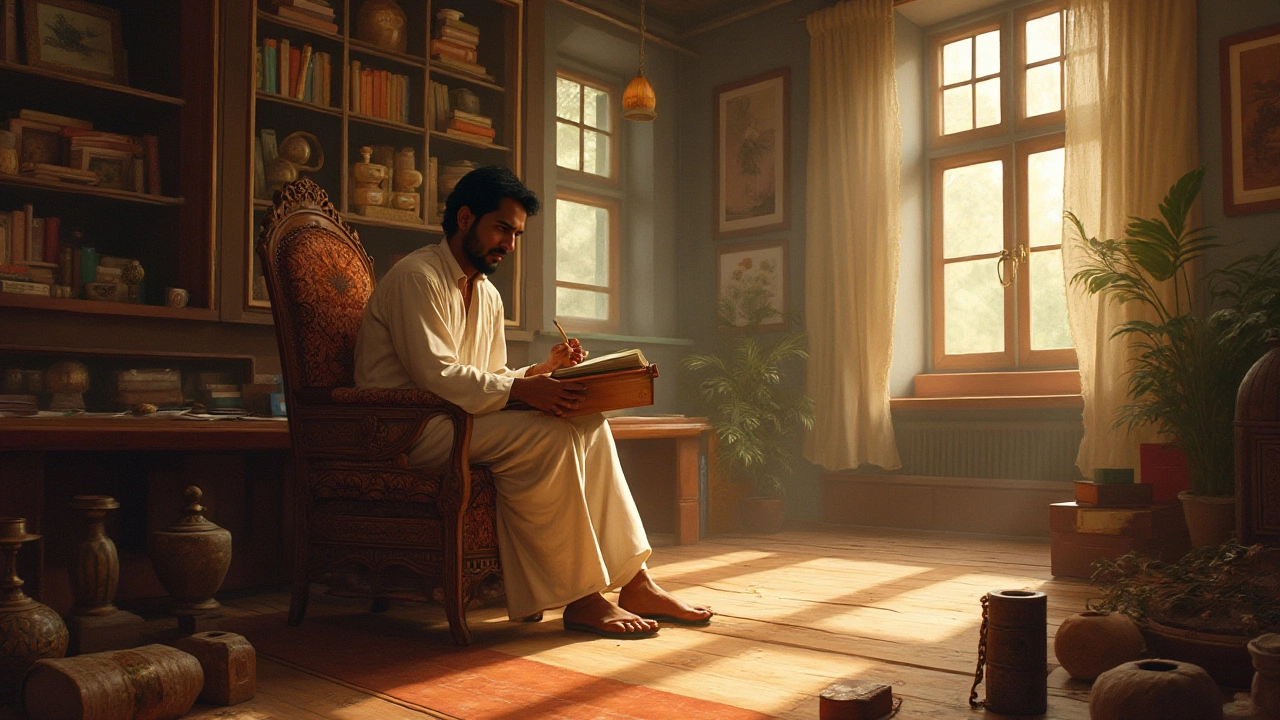The world of poetry is vast and intricate, filled with voices that weave emotions and stories into words. When seeking the crown of the World No 1 poet, especially in the context of Indian short poetry, defining such a title becomes a formidable task. Poets from India, with their diverse cultural backgrounds and unique perspectives, contribute to this rich tapestry.
India has a long history of remarkable poets whose works have not only shaped the literary landscape but also inspired generations globally. Their poetry ranges from traditional forms to contemporary free verse, each style painting vivid pictures of life, love, and everything in between. This journey into the soul of Indian short poetry sheds light on the elements of culture, philosophy, and personal experience that these poets bring to their art.
- Defining Greatness in Poetry
- Indian Poetic Icons
- Cultural Influences on Indian Poetry
- The Evolution of Short Poetry in India
- Appreciating Diverse Voices
Defining Greatness in Poetry
Greatness in poetry is a concept both ethereal and substantial, marked by the poet's ability to move hearts, inspire change, and capture the essence of the human experience in words that resonate across cultures and generations. The title of the World No 1 poet isn't just about technical excellence or widespread popularity. It involves a complex mix of originality, emotional depth, linguistic ingenuity, and the capacity to convey universal truths.
In Indian short poetry, greatness is often interwoven with cultural narratives and personal reflections, forming a tapestry that mirrors the diversity of the nation itself. Many Indian poets have risen to prominence by crafting distinguished works that delve into themes such as societal change, spiritual introspection, and the beauty of everyday life. Their ability to encapsulate profound thoughts in succinct, evocative verses sets them apart in the literary world. The historical context is crucial, as poetry in India has been a medium of expression and resistance, with poets playing significant roles in social and political movements since ancient times. One might remember the powerful verses of poets like Rabindranath Tagore, whose words still inspire dialogues on freedom and identity today.
"The butterfly counts not months but moments, and has time enough." — Rabindranath Tagore
A critical aspect of defining the greatest of a poet also involves the impact they leave on their readers and the literary community. Indian poets like Kamala Das and Gulzar have a unique ability to connect deeply with their audiences, evoking emotions that linger long after the page is turned. Contemporary Indian poets continue to experiment, blending traditional poetic forms with modern themes, challenging the boundaries of what poetry can express, and thereby redefining greatness in every new work. It's this dynamic evolution, rooted in rich historical and cultural traditions, that keeps the discussion of poetry's greatest ever-evolving and endlessly fascinating.
Indian Poetic Icons
Within the realm of Indian short poetry, there stirs a constellation of poetic giants whose works resonate worldwide. These Indian poets not only capture the essence of the human experience but also embrace the vast cultural diversity of the subcontinent. Rabindranath Tagore is a name synonymously associated with Indian poetry, known for his unmatched versatility and profound depth. His acclaimed work, "Gitanjali," has left an indelible mark on literary landscapes everywhere, earning him a Nobel Prize in Literature in 1913. Through his words, Tagore conveyed universal themes of love, spirituality, and harmony, while seamlessly weaving in cultural nuances.
Another vital figure in Indian poetry is Sarojini Naidu, known as the 'Nightingale of India.’ Her lyrical prowess was remarkable, and her poems often reflect the vibrant tapestry of Indian life. Her collection "The Golden Threshold" exquisitely captures the simplicity of folk traditions and the fervor of nationalistic spirit, demonstrating her profound connection with her roots. Naidu's works have served as a torchbearer of creativity and inspiration, blending emotional intensity with keen observation.
Revolutionary Voices
Historically, poetry in India has been a medium for protest and social change, a legacy carried on by several revolutionary poets. Faiz Ahmed Faiz, although having his roots in Pakistan, carries an undeniable influence on Indian poetry. His poignant works often explore themes of political oppression and human rights, resonating across borders and languages. His poem "Bol" stands as a testament to his belief in speaking out against injustice. Frequently quoted by activists and lovers of poetry alike, his contributions are central to the dialogue of freedom and expression.
"Speak, for your lips are free; Speak, your tongue is still your own." – Faiz Ahmed Faiz
From different eras and parts of India, the rustic charm found in works of Kabir, a 15th-century poet, brings another dimension to this rich tradition. His couplets, known as 'Dohas,' strip down existential concepts to their bare simplicity, challenging the societal norms of his time. Kabir's legacy as both a poet and a philosopher remains vibrant, inspiring readers to look beyond the superficial and delve into deeper truths about life and spirituality.
The tapestry of Indian poetry also holds cultural and regional icons like A. K. Ramanujan, whose translations and original works bridge the worlds of Indian traditionalism and modernism. His contributions extend beyond pen to the world of academia, where he played a pivotal role in introducing Indian oral traditions to the Western world, thus preserving and celebrating Indian cultural heritage for future generations.
In exploring the works of these poetic icons, the diversity and profound impact of short poetry in India reveals itself. Whether through the poignant observations of common life by poets like Kamala Das or the evocative landscapes of longing and love by Gulzar, Indian short poets continue their indomitable legacy of capturing the essence of life in beautiful brevity. Their works echo in the whispering winds, finding their place in the hearts of those who cherish the rhythm of words and the lyricism of life.

Cultural Influences on Indian Poetry
Indian poetry is a magnificent tapestry woven with threads from the myriad cultures that coalesce within its borders. These influences are palpable, visible in both classic and contemporary works, reflecting a nation's soul steeped in spirituality, philosophy, and a rich history of oral traditions. One can feel the pulsating rhythm of India’s diverse linguistic landscape as it echoes through its poetry. Across the Indian subcontinent, languages such as Hindi, Bengali, Tamil, and Urdu, among others, each bring their own lyrical nuances and styles, influencing the art form profoundly. Each regional dialect carries centuries of poetic tradition, creating a mosaic of diversity in expression.
The spiritual philosophies of India, particularly Hinduism, Buddhism, Islam, and Sikhism, have a long-standing relationship with the country’s poetry. These religious doctrines often provide the thematic backbone of many poetic works, reflecting concepts like karma, dharma, and nirvana. The World No 1 poets from India often explore these deep, existential questions through their verses, encouraging readers to ponder upon life's deeper meanings. In Rabindranath Tagore’s 'Gitanjali', one senses the symbiosis between humanity and divinity, echoing the spiritual ethos of the times.
"Where the mind is without fear and the head is held high; Where knowledge is free..." – Rabindranath Tagore
The historical turmoil India has faced—ranging from invasions to colonialism—also manifests in its poetry. The freedom struggle, in particular, rendered way to a distinct genre of patriotic poetry. Poets like Sarojini Naidu and Subramania Bharati infused their works with nationalist fervor, capturing the collective consciousness of a nation aspiring for freedom. This political landscape not only shaped the thematic undertone of poems but also influenced the languages and styles poets employed. The urgency and intensity found in short poetry India during this period reflect the revolutionary spirit that was in the air at that time.
Music and dance, integral components of Indian culture, also leave an indelible mark on its poetry. From the beat of the tabla to the classical ragas, rhythmic and melodic structures find their way into poetic compositions, lending them a musical quality. The poetry of Mirza Ghalib, for instance, seamlessly integrates ghazal—a poetic form often evoking musical elements—into its construction, demonstrating how entrenched the connection between music and poetry is in India. The musicality of such poems enhances their emotional impact, resonating deeply with audiences across generations.
Lastly, the tapestry of Indian mythology and folklore provides a bedrock of symbolism and metaphor that poets draw upon to enrich their works. Figures like Krishna and Sita, and epic narratives from texts such as the Mahabharata and Ramayana, offer endless inspiration. These mythical elements are often used to mirror contemporary issues, allowing a timeless reflection that speaks across ages. Thus, the cultural influences on Indian poetry create a dynamic, evolving art form that continues to captivate and inspire a global audience.
The Evolution of Short Poetry in India
Short poetry in India has seen a remarkable transformation over centuries, mirroring the country's dynamic history and cultural shifts. From ancient times, Indian poets have been crafting concise verses that hold profound meaning, starting with texts like the Rigveda, one of the oldest known sacred texts made up of hymns. These pieces are not just religious documents but also artistic expressions, reflecting highly to the dawn of poetry in India. As eras shifted, so did the language and style, with subsequent periods like the medieval era bringing a wealth of devotional poetry. This period showcased the richness of emotion and devotion, as poets like Kabir and Mirabai interwove spiritual themes with everyday life in their intense and passionate works.
The influence of Persian and Urdu poetry became prominent during the Mughal era, introducing new styles and fostering a syncretism in poetic expression. This cultural blending saw the introduction of essential poetic forms like ghazals and qasidas, which conveyed complex emotions with precision and beauty. These forms would go on to become integral parts of Indian literary tradition, influencing countless poets in the future. The colonial period saw another shift, bringing the influence of Western styles and themes. Yet despite these changes, Indian poets retained their unique voice, often using their art to express resistance and preserve cultural identity amidst political upheaval.
"Poetry is an echo, asking a shadow to dance" — Carl Sandburg. This quote captures how Indian short poetry, through its evolution, often reflects deeper cultural and societal themes, dancing through echoes of the past while paving the path for the future.
In the post-independence era, short poetry in India continued to flourish with modern influences. Poets such as R.K. Narayan and Kamala Das embraced traditional narrative while also experimenting with newer forms, thus representing the country's dual nature of reverence for the past and enthusiasm for the future. Contemporary poets now use platforms like digital media to reach a global audience, their short, potent verses resonating across borders. This global reach has allowed Indian poetry to evolve continuously, adapting new influences while maintaining its essence.
The ongoing journey of Indian short poetry is a testament to the country's ever-changing cultural mosaic. The ability to stay current while strongly rooted in traditions is what makes Indian poetry so compelling. As poets continue to explore contemporary themes — from modern urban experiences to political dissent — they reflect India's dynamic society through the lens of short, powerful verses. This aspect of adaptability ensures that Indian short poetry remains relevant, bridging the ancient with the modern, the local with the universal.

Appreciating Diverse Voices
Exploring the vast array of voices in short poetry India offers a fascinating journey through the heart of India's cultural and social landscape. Each poet, a unique conduit of thoughts and emotions, contributes to a collective narrative that is both diverse and profoundly rich. From ancient classical poetry to modern free verse, Indian poets express through a spectrum of languages and dialects, reflecting the country's multilingual heritage. The essence of Indian poetry can be seen in the vibrant works of poets from Rabindranath Tagore to contemporary voices like Rupi Kaur, whose pieces transcend geographical boundaries and resonate globally.
Poets in India often tap into their regional cultural experiences, providing a kaleidoscope of insights into local traditions, beliefs, and social issues. The beautiful diversity in Indian poetry is not only shaped by language but also by the socioeconomic backgrounds of the poets. Writers like Kamala Das, known for her feminist voice, challenge the societal norms through poignant verses, opening dialogues on gender and identity. Similarly, the works of Dalit poets like Namdeo Dhasal highlight the fierce struggle and resilience in the face of oppression.
"Poetry is an echo, asking a shadow to dance," said Carl Sandburg, encapsulating how poetry reverberates through time and space.
In appreciating the World No 1 poet, it's crucial to understand that greatness is not solely determined by fame but by the ability to touch readers' hearts across generations. Indian poets excel in this art by being both reflective and revolutionary. The voice of Mahadevi Varma, for example, showcases a seamless blend of spiritualism and empathy. At the same time, Arundhathi Subramaniam addresses contemporary themes with a finely tuned sensibility. This symbiosis of tradition and modernity makes the appreciation of Indian poets an enriching experience. When audiences embrace these diverse voices, they engage with a tapestry woven from the challenges and triumphs of everyday life in an ever-evolving cultural landscape.
Celebrating New Influences
Today, the influence of global connectivity has brought new dimensions to Indian poetry. Social media platforms have become melting pots for creativity, enabling poets from various backgrounds to share their creations with a wider audience. Spoken word poetry and performances are increasingly popular among younger generations, encouraging experimentation and innovation within the poetic form. These new-age poets are unbound by the limitations of literary tradition, mixing languages, incorporating multimedia, and presenting poetry as an immersive experience. Such dynamism ensures the growth of Indian poetry, ever-enriching the literary scene with fresh voices and perspectives.
